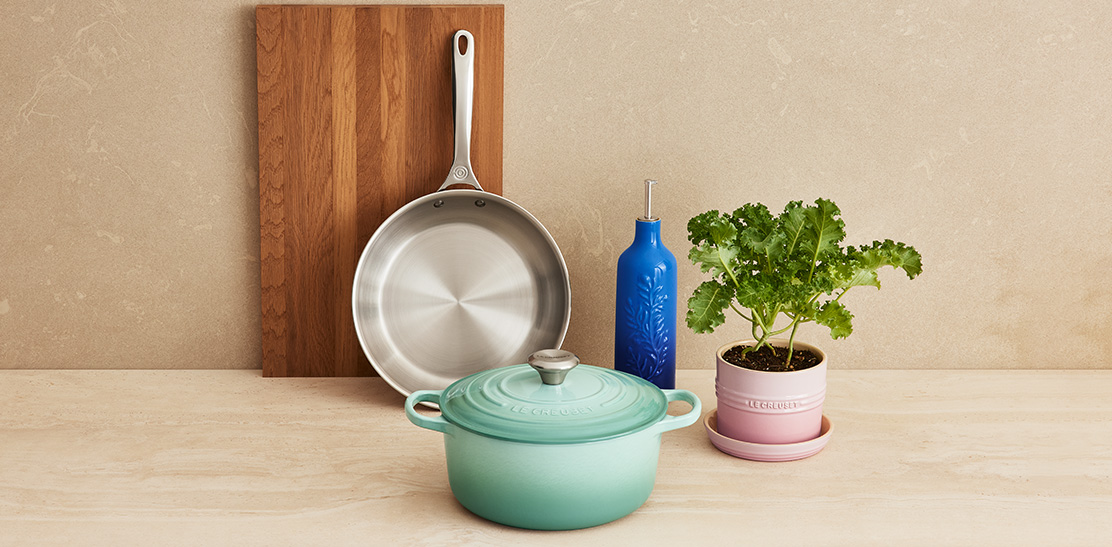
The Dutch Oven is among the most versatile pieces of cookware on the market, adaptable to any number of recipes and cooking techniques. From slow-cooking and searing to braising and baking, this multi-purpose pot opens up the possibilities in the kitchen, delivering a lifetime of delicious meals.
But what exactly makes the Dutch Oven such an iconic piece of cookware?
Le Creuset’s enamelled cast iron Dutch Ovens epitomize quality craftsmanship, tradition, and timeless aesthetics. Since 1925, they have inspired generations of chefs and home cooks to expand and refine their cooking.
Dutch Ovens are of course available in different shapes, sizes, and even colours to suit every cook and kitchen. And while you can't go wrong with your choice, these pieces are made to last a lifetime so choosing one can seem like a big decision. To simplify the decision, we will walk you through all the key considerations to keep in mind.

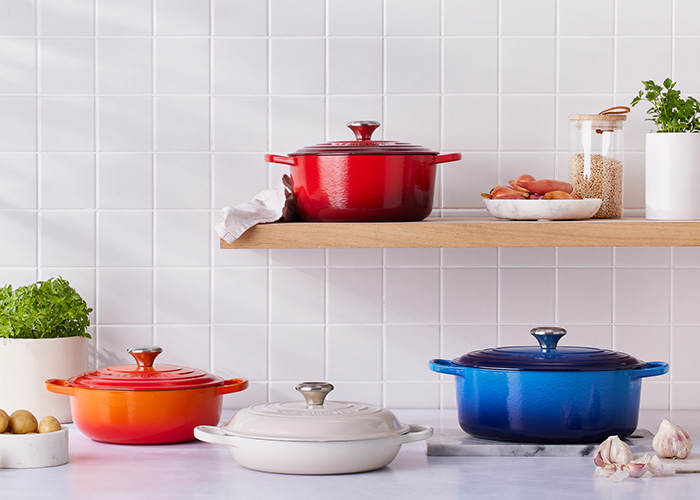
What is a Dutch Oven?
The Dutch Oven, also known as the French Oven or Cocotte, is a thick-walled pot and has often been dubbed the original multipurpose pot. In fact, Le Creuset revolutionized the traditional Dutch Oven design from the 18th century replacing the pure cast iron with enamelled cast iron. Although it might seem simple, this subtle change improved heat retention, durability and performance.
This staple piece of cookware is now used today for a range of cooking techniques, including slow-cooking, simmering, sautéing, roasting, browning, baking, frying, and braising — to name a few. Equipped with a tight-fitting lid, the Dutch Oven is designed to lock in heat, flavour, and moisture, creating a self-basting cycle for ingredients.
Le Creuset Dutch Oven Features
Le Creuset’s enamelled cast iron Dutch Ovens combine premium materials, authentic design, and expert craftsmanship to produce delectable meals time after time. From its tight-fitting lid to its sand-coloured enamel, these seven Dutch Oven features have made them a staple in kitchens across the world.
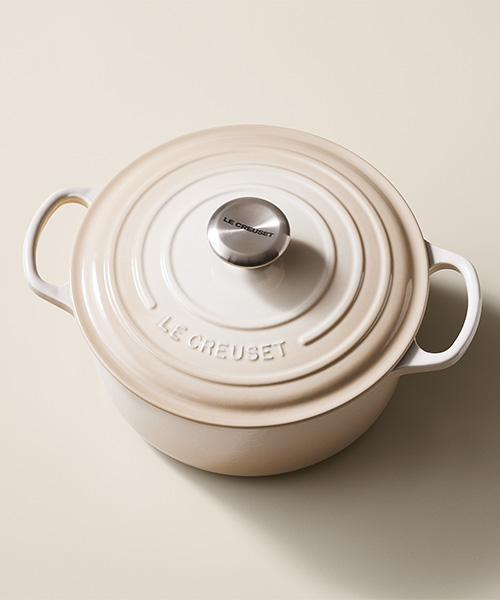
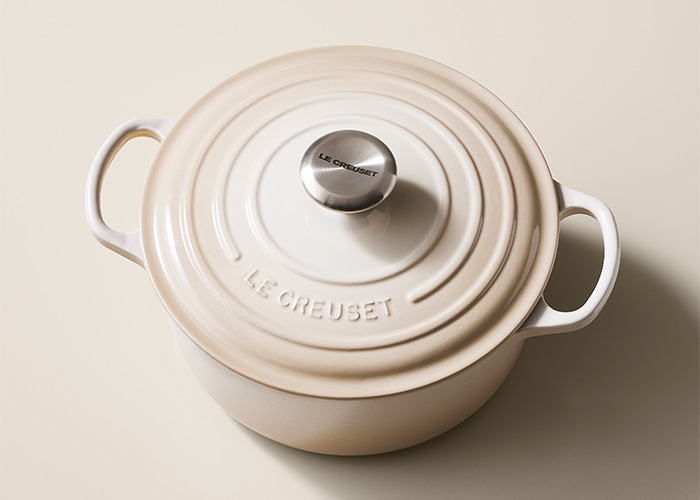
Le Creuset’s enamelled cast iron Dutch Ovens are each cast in individual molds and hand inspected by expert French artisans. As a result, their tight-fitting lids fit perfectly atop this multipurpose pot, preserving flavours over a long simmer. This feature plays a crucial role in the self-basting cycle of the Dutch Oven, delivering flavourful, tender meals every single time
These tight-fitting lids ensure superior heat retention and even heat distribution, allowing the Dutch Oven to mimic a convection oven. Crafted with premium materials, including a long-lasting interior and exterior enamel, the Dutch Oven’s tight-fitting lid is resistant to chipping, cracking and warping.
The sand-coloured enamel is yet another integral feature of Le Creuset’s Dutch Ovens, ensuring you can monitor the progress of recipes as they cook. Put simply, the lighter the enamel, the easier it is to check on recipes. This ultimately helps home cooks avoid burning sensitive ingredients and dishes and is especially important when preparing complex dishes.
Typically, all of Le Creuset’s Dutch Ovens are designed with a sand-coloured enamel, embodying the set-it-and-forget-it nature of slow-cooking, be it when tenderizing meat, simmering a soup, or reducing a sauce.
Le Creuset’s Dutch Ovens are expertly crafted with thick, enamelled cast iron walls, which in turn, are designed to trap in moisture and flavours as ingredients slow-cook. In fact, Le Creuset's commitment to innovation and offering the best in kitchen solutions has resulted in our cast iron being the lightest per litre on the market. This means that moving your cookware around the kitchen from the stove to the oven and to the table can be done with ease.
The thick, enamelled cast iron walls ultimately create the ideal environment for ingredients to slow-cook to perfection, providing superior heat retention and even heat distribution at every turn.
Le Creuset’s Dutch Ovens are available in no fewer than 14 iconic hues, injecting a bold splash of colour in any kitchen setup. Whether you want to display your enamelled cast iron Dutch Oven from a pot rack, or use it as a centerpiece, the Dutch Oven’s versatility knows no bounds, especially from a design point of view.
From the original flame coloured Dutch Oven originating all the way back to 1925 to the calming Agave, this iconic piece of cookware can serve as a statement piece in kitchens – and even directly on the table.
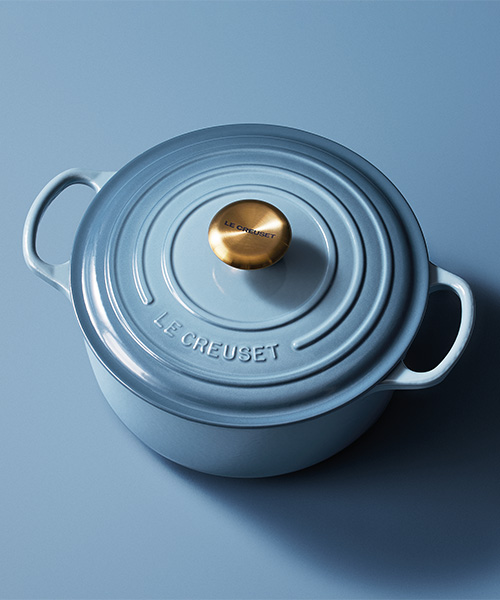
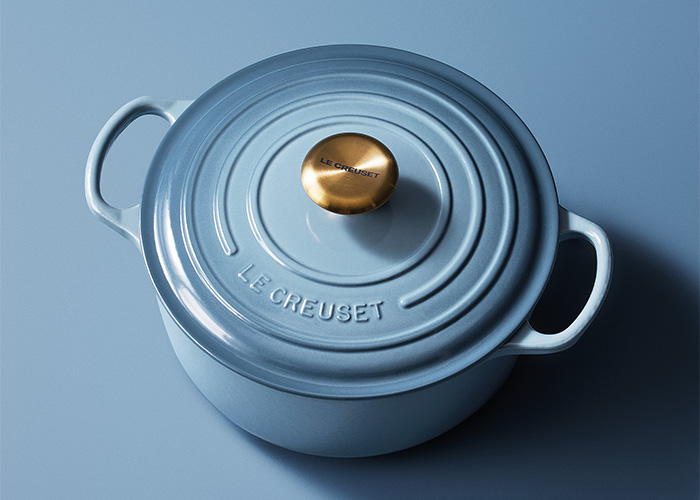
Arguably one of the most, if not the most important feature of our enamelled cast iron Dutch Ovens is their self-basting cycle. Put simply, this feature tenderizes ingredients as they slow-cook, releasing heat evenly throughout.
Le Creuset’s Dutch Ovens are designed to continuously baste ingredients in their own juices, locking in heat and moisture thanks to their tight-fitting lid. In fact, Le Creuset initially invented the spiked lid, which featured small bumps on the inside of the lid where condensation could collect and drip back into the dish. Eventually, this design was replaced with a more sleek solution that did not require the spikes and instead featured a slightly domed lid that could offer the same results. The Dutch Oven’s self-basting cycle is particularly convenient for beginner chefs looking to prepare flavourful meals with ease.
The Dutch Oven is available in a number of different shapes and sizes, depending on your cooking needs. Ultimately, each Dutch Oven is suited for its own set of cooking techniques and recipes. Le Creuset offers four differently shaped Dutch Ovens including the Round Dutch Oven, the Oval Dutch Oven, the Chef’s Dutch Oven, and the Shallow Round Dutch Oven.
We also offer variety of sizes of Dutch Ovens, ranging from 1L all the way to 12L, accommodating recipes and cooking techniques that suit your favourite dishes and skills. Before deciding on size, be sure to ask yourself exactly how you intend on using this iconic piece of cookware. The general rule of thumb when picking the size of your enamelled cast iron Dutch Oven is that each litre serves one portion. You may also want to consider if you will use this for sides, mains, batch cooking or hosting.
Last but certainly not least, all of Le Creuset’s Dutch Ovens are designed with wide loop handles, allowing you to move them from the stovetop to the table with ease. Much like the Dutch Oven itself, the handles have been carefully crafted with enamelled cast iron, making them resistant to bending or cracking under high heat.
Their wide loop handles are a particularly essential feature, especially as you are looking to transfer liquids from the pot to a dish, or simply want to remove the enamelled cast iron Dutch Oven from the stovetop or oven, providing a secure and comfortable grip.
Le Creuset Dutch Oven Shapes
Now that you are familiar with the Dutch Oven’s features, it is time to consider this iconic pot’s multiple shapes. From the Round Dutch Oven to the Oval Dutch Oven, each uniquely-shaped Dutch Oven is best suited to its own set of recipes and cooking techniques.

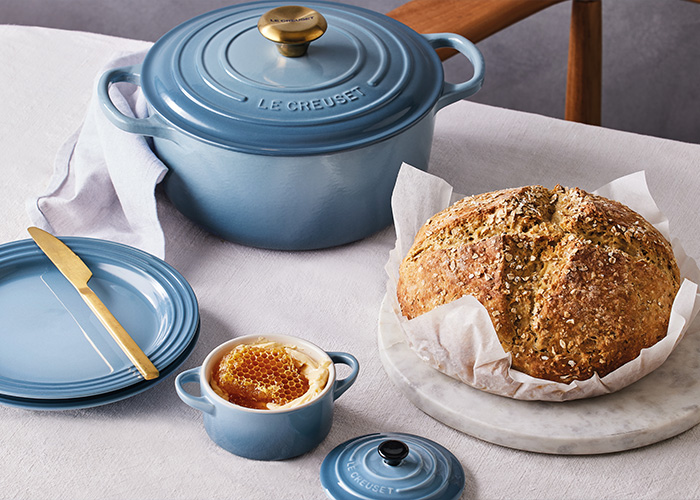
Round Dutch Oven
The Round Dutch Oven, the trailblazer of the Le Creuset Dutch Ovens, is currently available in a variety of sizes, ranging from 0.9L (1 serving) all the way up to 12L (12 servings), accommodating all your favourite recipes. This piece of cookware is particularly suited for preparing stews, roasts, and baking, featuring tall walls that can contain lots of ingredients and liquids. Its round shape exposes ingredients to a consistent heat source, perfectly matching the burner.
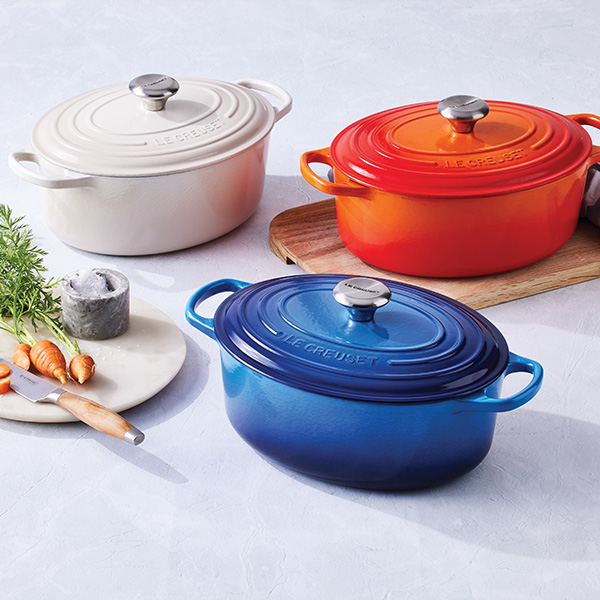
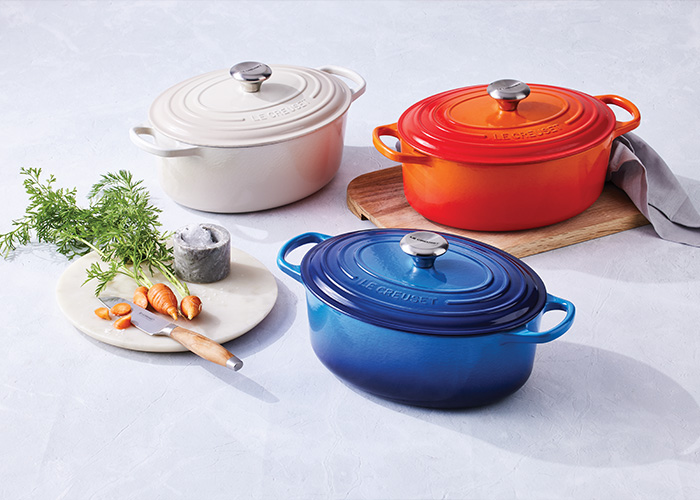
Oval Dutch Oven
The Oval Dutch Oven, by contrast, can be used for many of the same recipes and cooking techniques as its round counterpart, despite featuring a more elongated shape. Its shape, in turn, makes the Oval Dutch Oven particularly ideal for roasts, or when preparing poultry and fish.
This Dutch Oven’s slender shjape making it ideal for family-style servings. Our Oval Dutch Oven is currently available in two different sizes, including 4.7L (4-5 servings), and 6.3L (5-6 servings). Chicken recipes such as Coq au Vin Mousseux is a great place to start with this piece of cookware, including our full list of Dutch Oven chicken recipes.
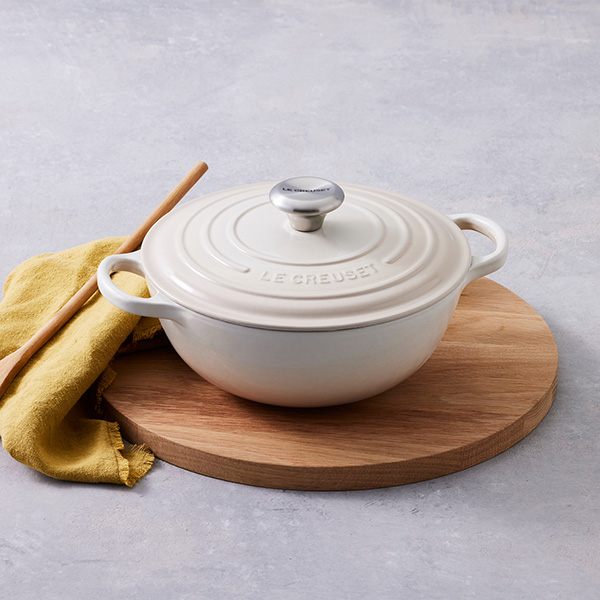
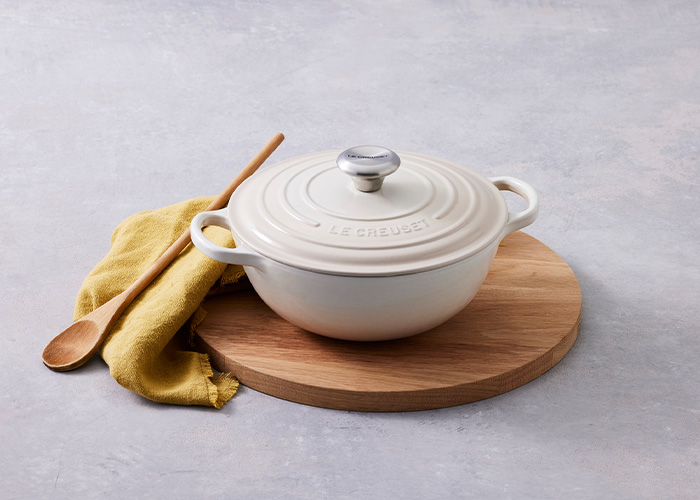
Chef’s Dutch Oven
Arguably the most unique in shape, the Chef’s Dutch Oven features sloping sides to keep liquids moving and prevent ingredients from sticking to the corners. As a result, this enamelled cast iron Dutch Oven is best suited for sauces, soups, pasta dishes, or when deep-frying.
The Chef’s Dutch Oven comes in two different sizes, including 4.1L and 4.9L, accommodating recipes for up to four to five people at a time. While the sloped sides reduce the surface area available, the Chef’s Dutch Oven creates the ideal environment when deep-frying ingredients, or when simmering a soup, preventing boilovers and sticking more effectively.
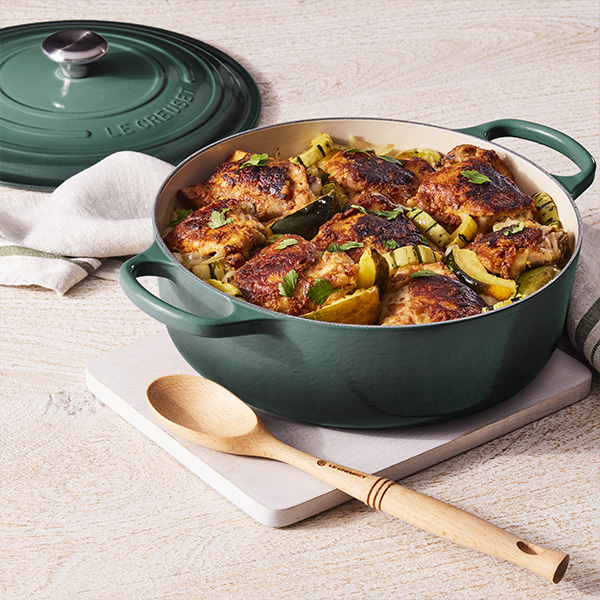

Shallow Round Dutch Oven
The Shallow Round Dutch Oven is our fourth and final shape, offering the ideal in-between shape of a Dutch Oven and a braiser. In fact, this enamelled cast iron Dutch Oven combines the wider surface of the braiser with the taller sides of the Dutch Oven, making it particularly ideal for stews, searing braises, and soups.
The Shallow Round Dutch Oven is typically used when searing or browning large batches of meat before slow-cooking. This Dutch Oven pot comes in one size, 6.2L, serving between five and six people.
All Le Creuset Dutch Ovens are compatible with all heat sources, including induction, going from stovetop to the oven with ease.
How to Choose a Le Creuset Dutch Oven
When considering the different Dutch Ovens, it is important to consider exactly how you intend on using this iconic piece of cookware. Ask yourself, will you often be cooking for large groups, or will it typically just be for two people? Remember, that each liter of your Dutch Oven typically represents an additional serving. For example, a 6.2L Dutch Oven can usually serve up to six people.
Once you’ve decided on size, it is time to consider the four different Dutch Oven shapes and the recipes they are best suited for, as illustrated above. The Round Dutch Oven is typically a good place to start, representing the original design and a variety of classic cooking techniques and recipes. If you can’t bring yourself to choose one, (and we don’t blame you) there is always our Set of Two Dutch Ovens, featuring both the Round Dutch Oven and Oval Dutch Oven.
Le Creuset Dutch Oven Care and Use
Taking proper care of your Dutch Oven can make a world of difference, ensuring its durability and top-quality performance for generations to come. Before cleaning your enamelled cast iron Dutch Oven for the first time, be sure to have the following items on hand:
- Le Creuset’s Cookware Cleaner
- Soft non-abrasive brushes and pads, such as our Nylon Brush
Now that you have these essential Dutch Oven care and use items, there are four simple steps to follow.
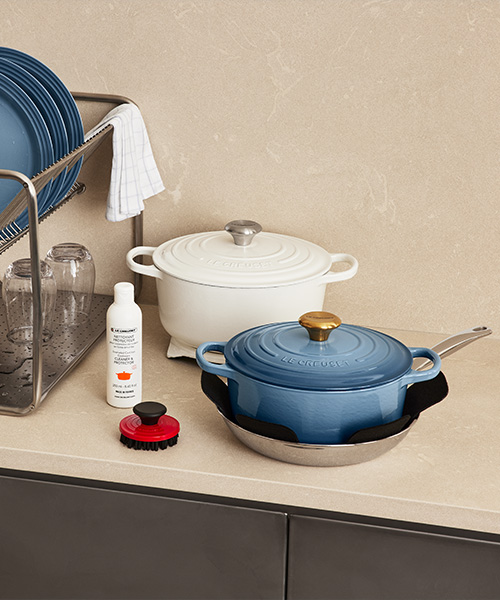
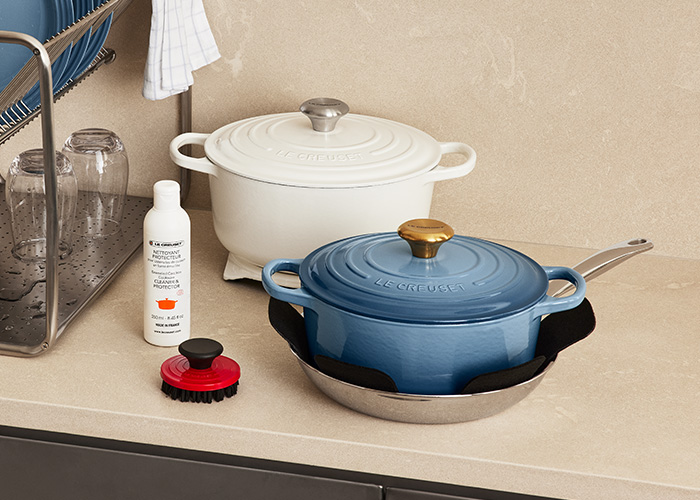
After use, soak your Dutch oven in a mixture of water and baking soda to loosen stubborn residue and stuck-on food. However, it is especially important to allow the Dutch Oven pot to cool down before beginning, avoiding thermal shock. Then, add baking soda to your Le Creuset Dutch Oven and bring to a rolling simmer for approximately eight to 10 minutes.
Next, you can proceed to scrape off any remaining food residue with a Nylon Brush. Keep in mind that the interior enamel is sensitive and does not require intense scrubbing. Typically, soft, non-abrasive pads are recommended for this step, as well as wooden utensils, to avoid compromising the integrity of the surface. Specifically designed for enamelled cast iron Dutch Ovens and cookware, our Cookware Cleaning kit can also be used for this step.
The third step in this process is cleaning the outside of the Dutch Oven pot. Ideally, mixing hot, soapy water along with baking soda is recommended. Once adequately mixed, begin scrubbing the outside of your Le Creuset Dutch Oven. Once again, do not use metallic pads or abrasive cleaning agents for this step. Instead, nylon or soft abrasive pads are best suited to tackling any messes.
Finally, with all stuck-on food residue removed and the outside cleaned, you can rinse off your Dutch Oven one final time. At this step, your Dutch Oven pot should be looking brand new again. With the Dutch Oven fully cleaned and shining again, be sure to dry it completely before storing, wiping it with a paper towel or kitchen towel. Typically, we recommend storing your Dutch Oven in a dry cupboard or in an airy space away from steam.
Picking a Le Creuset Dutch Oven
Le Creuset Dutch Ovens highlight our ongoing commitment to innovation and excellence in the kitchen. With their enamelled cast iron construction, our Dutch Ovens evenly retain and conduct heat, producing consistently delectable results.
Available in so many shapes and sizes, it’s no surprise that these versatile pieces of cookware serve a number of crucial purposes in and around the kitchen, making them essential to any growing cookware collection. For more information and inspiration on our Dutch Oven cooking, be sure to visit our blog, or our very own Cooking School — where we break down the most common cooking, baking, and knife techniques.

